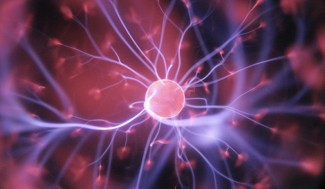The team led by Prof. Stéphane CHARPIER (Sorbonne Université) at the Brain and Spine Institute is describing live for the first time the neuronal changes during reoxygenation of the brain in anoxia in an experimental in vivo model.
Abstract
We developed a new rodent model of reversible brain anoxia and performed continuous electrocorticographic (ECoG) and intracellular recordings of neocortical neurons to identify in real-time the cellular and network dynamics that successively emerge throughout the dying-to-recovery process. Along with a global decrease in ECoG amplitude, deprivation of oxygen supply resulted in an early surge of beta-gamma activities, accompanied by rhythmic membrane depolarizations and regular firing in pyramidal neurons. ECoG and intracellular signals were then dominated by low-frequency activities which progressively declined towards isoelectric levels. Cortical neurons during the isoelectric state underwent a massive membrane potential depolarizing shift, captured in the ECoG as a large amplitude triphasic wave known as the "wave-of-death" (WoD). This neuronal anoxic depolarization, associated with a block of action potentials and a loss of cell integrative properties, could however be reversed if brain re-oxygenation was rapidly restored (within 23.5 min). The subsequent slow repolarization of neocortical neurons resulted in a second identifiable ECoG wave we termed "wave-of-resuscitation" since it inaugurated the progressive regaining of pre-anoxic synaptic and firing activities. These results demonstrate that the WoD is not a biomarker of an irremediable death and unveil the cellular correlates of a novel ECoG wave that may be predictive of a successful recovery. The identification of real-time biomarkers of onset and termination of cell anoxic insult could benefit research on interventional strategies to optimize resuscitation procedures.
Sources
*Adrien E. Schramm, Antoine Carton-Leclercq, Shana Diallo, Vincent Navarro, Mario Chavez, Séverine Mahon, and Stéphane Charpier. Identifying neuronal correlates of dying and resuscitation in a model of reversible brain anoxia. Progress in Neurobiology. DOI :10.1016/j.pneurobio.2019.101733







